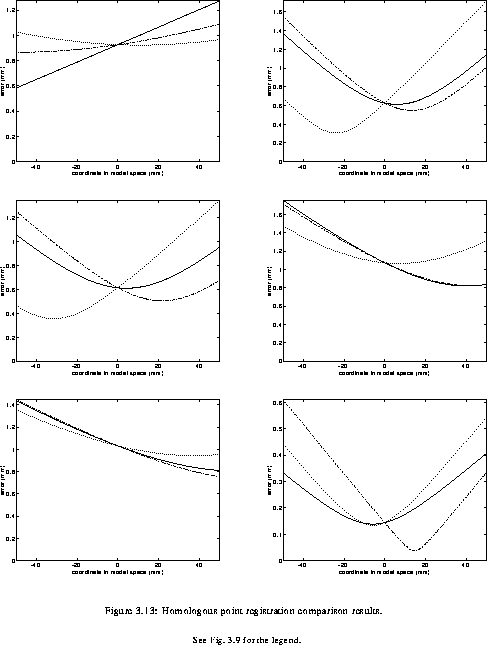
Further experiments have been performed to evaluate the difference between registrations performed by homologous point matching using the corners of the frame markers. In order to remove the possibility of error introduced by displacement of the images of the fiducials markers in MRI, an equivalent set of CT scans was acquired. Four registrations by homologous point matching were performed using the same protocol as for the clinical study decribed above. The difference between all pairs of registrations is shown in pp_comp.

These graphs clearly demonstrate that the difference between the various pairs of homologous point matching registrations is significantly smaller than the difference between registrations performed with the two different methods reported in the last section. This leads us to conclude that large differences between registrations observed in graphs of first_patientlast_patient are probably due to the variability in the surface fitting registrations. However, additionnal experiments are needed to confirm this. Since these results show the difference between registrations, they are not affected by geometrical distortion of images and conclusions can be extended to MR data sets (only the absolute registration error is affected by geometrical distortion of images).
These data suggest that the use of a homologous point matching procedure on a rigid localization structure leads to more stable (i.e., less variable) registrations (however, it does not establish whether it is more accurate than surface matching registrations). This is seen as a necessary step toward more accurate , and suggests that further attempts at error reduction be based on a rigid set of fiducial markers.